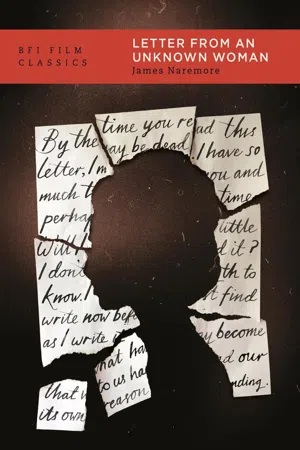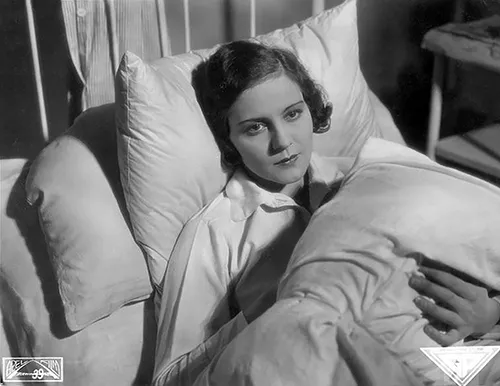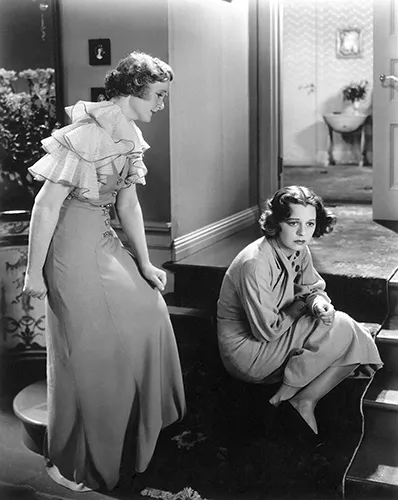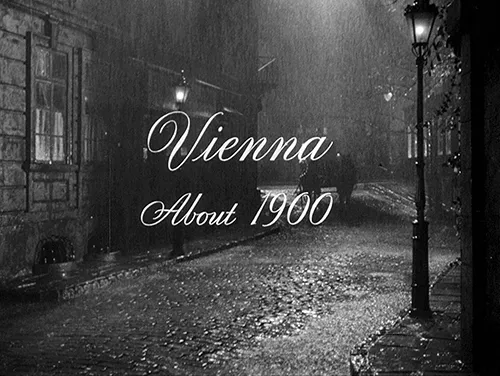![]()
1 A Novella and its Adaptations
Austrian author Stefan Zweig’s 1922 Brief einer Unbekannten (Letter from an Unknown Woman) tells the story of a carefree, successful, 41-year-old author, identified only as ‘R.,’ who returns home to Vienna after a vacation in the mountains and finds in his mail a letter of roughly two-dozen pages in an unfamiliar handwriting. He relaxes in a chair, lights a cigar and reads a woman’s words from the grave. ‘My child died yesterday’, the letter begins. The woman is suffering from the same influenza that killed her child, and she, too, will soon be dead. She writes because ‘I have only you, who never knew me, and whom I have always loved’ (all quotations are from the Anthea Bell translation in Zweig, Fantastic Night: Tales of Longing and Liberation.1
In her unsigned letter, the woman explains that she first encountered R. sixteen years earlier, when she was thirteen and he was twenty-five. He had just moved to an apartment in Vienna across the hall from where she and her widowed mother lived. She was intrigued by R.’s manservant, Johann, who supervised the moving of art objects and leather-bound books, creating an air of learning, riches and ‘something out of the ordinary, of mystery’. Then came her first glimpse of R. – a coup de foudre as powerful as Petrarch’s first sight of Laura or a pubescent girl’s first view of a rock star. Infatuated with R.’s handsomeness and apparent charm, she began to look through her keyhole to spy upon the many beautiful women who visited him. He barely knew she existed, but henceforth she was his ‘slave’. When she helped Johann remove expensive rugs from R.’s apartment in order to beat them, she was dazzled by the desk where he worked and the flowers in his crystal vase. From then until age sixteen, to become worthy of him, she began studying hard at school, reading voraciously and rising to the top of her class. She tried to repair her old clothing, hoping to attract R.’s attention, but her attempts to know ‘the only point of reference for my life’ were thwarted when her mother found a prosperous new husband and the family moved to Innsbruck.
For the next two years she lived in secret mourning, until at last she convinced her stepfather to allow her to take a job as an assistant in a ready-to-wear shop in Vienna. Now a beautiful young woman, she returned to the metropole and freely roamed her old neighbourhood, hoping to see R.. ‘As chance would have it’, she writes (ignoring the obvious fact that she was looking for him), he passed her one evening in the street and observed her with keen interest. But she was wounded: ‘You did not recognize me, neither then, nor ever, you never recognized me … That was the first time I suffered it, the disappointment of being unrecognized by you. I have lived with it all my life, I am dying with it, and still you do not recognize me.’
A subsequent meeting on the street led to a conversation, after which R. invited her to dinner and then to his apartment. She was cheerfully compliant, even though she realized that ‘only prostitutes, the professionals of love, or perhaps very naïve adolescents’ would so quickly accept the invitation. That night and for the next three evenings, she and R. had blissful, passionate sex, and all the while he was unaware that ‘no man had touched me before, had ever felt or seen my body’. On the third day, he announced that he would be going on one of his frequent trips out of town and would see her when he returned. Instead of revealing her name, she gave him a post-office box where he could send messages. But she never heard from him. As months passed, she could see a light in his apartment windows, a sign that his life had resumed its normal ‘ardent and inconstant’ form. Meanwhile, she was pregnant with his son.
The child was born in a grizzly maternity hospital for the poor, a deadly place filled with ‘chloroform and blood’. The unnamed woman never tried to communicate with R., but for the next decade on his birthdays she anonymously sent him white roses like the ones he had given her after their nights together. Articulate and lovely, she chose to remain unmarried, supporting herself and her son by becoming an elite prostitute. ‘I sold myself’, she says. ‘I had rich friends, rich lovers … because I was – did you ever notice? – very beautiful.’ One evening at the opera, accompanied by a wealthy, indulgent lover, she realized R. was in the box next to hers. Overcome with longing, she made a hasty exit. Eventually, however, she and R. came together again on the evening of his birthday. She and another of her lovers had been to dinner at a restaurant in the Ringstrasse and then gone to a risqué dance club, where, uncharacteristically, she drank a good deal of champagne. At the next table was R., who gave her an inviting look and asked her to leave with him. As the ‘black dancers launched into one of those new-fangled modern dances’, she abandoned her lover and followed R. to his apartment. He regarded her as a prostitute, yet she was enraptured: ‘Once again I spent a whole, wonderful night with you. But you did not even recognize my naked body.’ He tried to give her bank notes in payment, but instead she took one of the white roses she had sent him for his birthday. As she was leaving, the manservant Johann recognized her, but R. remained oblivious. ‘I do not believe in God anymore’, the unknown woman writes. ‘I believe only in you, I love only you … goodbye.’
The story ends when, with a trembling hand, R. puts the letter down and thinks for a long time. He experiences ‘a vague and uncertain memory, like a stone seen shimmering and shapeless on a bed of a stream of flowing water … something broke open inside him, and he thought of the invisible woman, incorporeal and passionate, as one might think of distant music’.
* * *
For anyone who has seen the 1948 film adaptation, it should be obvious from the above summary that the novella is significantly different. The film is by no means inferior (I’ll argue that in many ways it’s superior), but the differences are important. Many (not all) were determined by the PCA, which kept close watch over sex on the screen. In subsequent pages, I’ll discuss changes made to satisfy censors and for less obvious reasons; first, however, it should be noted that the novella has been adapted more than once, with varying degrees of ‘faithfulness’.
Narkose (1929)
The first adaptation was Narkose (Narcosis), a 1929 German silent picture directed by Alfred Abel and written by the early film theorist Béla Balász. Unfortunately, this film survives only as an incomplete, roughly one-hour print in European archives. It differs considerably from the Zweig novella (it has a happy ending), but even in truncated form it belongs in visual terms among the finest examples of German expressionist cinema. The cast is international and the setting French, involving a woman named Angélique Laumain (Renée Héribel), a popular writer named René Vernon (Jack Trevor) and a manservant named Jean (Alfred Abel). The film’s most daring stroke is that Angélique’s story is told not through a letter but through a dream she experiences while under narcosis in a maternity ward – a plot device that motivates a variety of artful experiments, including expressionist designs, lens distortions, a busily moving camera and an elaborate montage sequence involving fading white roses. Photographer Günther Krampf was assisted by Eugen Schüfftan, who had become famous for his special effects in Metropolis (1927), and who developed an effect for Narkose by combining optical printing and mirrors, so that images seemed to appear in an expanding drop of water.
Only Yesterday (1933)
A more conventional but equally free adaptation is Hollywood’s pre-Production Code Only Yesterday (1933), produced at Universal, directed by John M. Stahl (a specialist in what were known as ‘women’s pictures’) and starring Margaret Sullavan in her movie debut. This film doesn’t acknowledge Zweig as a source. According to the credits, it was based on ‘the novel’ by Frederick Lewis Allen, but Allen’s best-selling Only Yesterday, first published in 1931, is a nonfiction history of the US during the 1920s, showing how the irresponsibility of the jazz age led to the Great Depression; Stahl’s film is related to it only in the sense that it starts with the Wall Street crash and flashes back to dramatize the characters’ lives between World War I and 1929. The central action, however, owes to Zweig’s novella, which had its first English translation in 1932. The major differences are that the unknown woman isn’t an obsessive romantic, the man isn’t a womanizer and is partly redeemed at the end, and the lives of the two lovers are determined by the history of World War I and its aftermath.
Near the beginning of Only Yesterday, a cocktail party at the home of wealthy stockbroker Jim Emerson (John Boles) is filled with socialites and hangers-on who seem relatively unaware of just how deeply the Crash has affected their world. There are almost a dozen speaking characters at the party, and a frankness about sex (including homosexuality) that feels remarkably modern. Emerson arrives late, ignores the guests and goes to his bedroom, where he gets a gun and begins writing a suicide note. He notices an envelope on the table and opens it to read a letter: ‘Does the name Mary Lane mean anything to you? And have you forgotten completely a night in Virginia during the war? To me it seems only yesterday.’
Dissolve to a flashback showing Emerson and Mary Lane (Sullavan) emerging from a wooded glade, where they’ve been having sex. Emerson is called to war and doesn’t know that Mary is pregnant with his child. She goes to New York and is aided in giving birth to her son by her aunt Julia (Billie Burke), who encourages her to become an independent, modern woman. Mary establishes a small business and each year sends Emerson an anonymous New Year’s greeting card. By chance, she meets him again. He doesn’t recognize her, but invites her to his bachelor apartment, where they have sex for the second time. Mary recalls all this in her letter to Emerson, in which she explains that she’s dying and he’s the father of her son. Emerson rushes out to meet her, but arrives too late. His son is there, in the uniform of his military boarding school. Emerson has a conversation with the boy, praising his military medals and inviting him for a hunting trip. After all, Emerson says, ‘I’m your father.’ The film ends as the astonished boy replies, ‘My father!’ Despite this conservative ending, Only Yesterday was too frank about sex and couldn’t be shown after 1934, when the Production Code went into full effect. It deserves rediscovery as what historian Charles Barr calls ‘one of the great films of its decade’.2
In 2013, there was talk in Hollywood of a new film based on Zweig’s novella, but it never materialized. I’ve not seen the complete 2004 Chinese version, which won a prize at the San Sebastian Festival, but an interview with its director, former actress Xu Jinglei, contains an intriguing observation: when she read the Zweig story at age nineteen, ‘The girl seemed pitiful, the man strange.’ But when she read it again years later, ‘I felt it was the man who was pitiful and the girl not at all’.3
Many readers of Zweig’s story and viewers of the 1948 adaptation have probably experienced similar shifting attitudes, or at least a degree of ambivalence toward the two major characters. I doubt that many have felt much pity for the male, but one of the fascinations of the unknown woman is that she’s both a rebellious, romantic heroine who overturns convention for the sake of love and an obsessive (like many characters in Zweig’s fiction) who becomes a kind of stalker. Her letter oscillates between declarations of passionate, undying devotion and indirect accusations; its most persistent motifs are two potentially contradictory assertions: ‘You did not recognize me’ and ‘I am not accusing you … I will never, never blame you for anything.’ As for R., who receives the letter, he’s both a complacent beneficiary of sexual pleasure and a successful novelist approaching middle age who has never personally experienced love and probably never will.
Max Ophuls’s Letter from an Unknown Woman, the most admired of the adaptations, is distinguished for the ways it keeps these tensions in play, giving them a tragic dimension and broadening the world around the characters – this despite changes censors forced the film-makers to make to the sexual aspects of the story. As I’ve indicated, however, several of the key differences between the film and the novella have nothing to do with the PCA. An important one has to do with Viennese history.
![]()
2 ‘Vienna About 1900’
The 1948 Letter from an Unknown Woman opens with a title card informing us that its story begins in ‘Vienna About 1900.’ The 1922 Zweig novella, published in the annus mirabilis of literary modernism (the same year as Ulysses and The Waste Land), doesn’t give us a date. Some have suggested it might be 1918, when Austria was swept by a pandemic of Spanish influenza, but automobiles in the streets and black jazz dancers in a cabaret indicate a year a bit closer to when the novella was published. Whatever the case, the difference between the Ophuls film and its source is significant. By pushing the historical frame back roughly two decades, the film becomes a romantic costume picture, exuding old-world charm and creating an air of nostalgia for pre-World War I Vienna. (‘I adore the past’, says the narrator of Ophuls’s La ronde [1950]. ‘It’s so much more peaceful than the present, and so much more certain than the future.’) Only a year after Letter from an Unknown Woman appeared, Carol Reed’s The Third Man showed what the twentieth century had done to the city.
In 1900, trouble was already evident in Vienna, which was a cradle of new art and ideas – home to opera librettist Hugo von Hofmannsthal, novelist and playwright Arthur Schnitzler, architect Otto Wagner, composer-conductor Gustav Mahler, painter Gustav Klimt and psychoanalyst Sigmund Freud, who had just completed The Interpretation of Dreams. Ludwig Wittgenstein, who became one of the world’s most important philosophers, had recently entered school in Vienna. A portent of things to come was that among his classmates (they probably never met) was Adolf Hitler.
Carl Schorske’s Fin-de-Siècle Vienna provides an absorbing account of the city’s culture and politics in the forty years leading up to the turn of the century, a period that was a deep-structural determinant of Zweig’s writings and in more subtle ways of Ophuls’s film. Schorske points out that Karl Joseph I, who ruled the last decades of the Austro-Hungarian Empire, had established a limited constitutional democracy in the 1860s, under which Vienna’s liberal haut bourgeoise shared voting power with the aristocracy, parts of the military, and the wealthy in the Catholic Church. Many of the liberals were secular, assimilated Jews (some converts to Catholicism) who became captains of industry and successful capitalists, and they were influential in Vienna’s transformation from a walled city to a modern capital encircled by the Ringstrasse, a wide boulevard associated with public works and impressive architecture.
‘Ringstrasse culture’ – rational, laissez-faire, patriarchal and sexually repressed – was similar to ‘Victorian culture’, but less nationalistic and more cosmopolitan. Around 1900, it experienced a crisis. From outside the Ringstrasse, a populist movement arose, supportive of the Catholic artisans and working class who were excluded from franchise and who equated the liberal elite with Jews and capitalism. Its leaders were proto-fascists Georg von Schönerer of the Pan-German party an...



